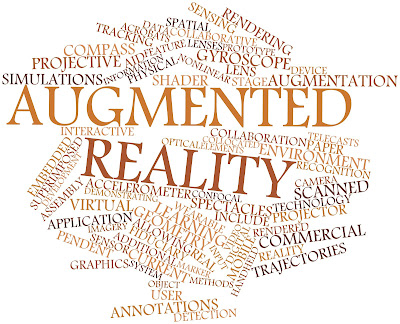Numerous
augmented reality (AR) and virtual reality (VR) applications have made their
debut in 2016. Many tech authorities predict
their undeniable rise next year as many industry giants race to develop their versions
of these platforms. Experts also believe that AR and VR will impact not just
the gaming industry but also the Internet landscape as a whole.
SEO companies and other optimization organizations might soon need to update their online
practices according to the latest developments in AR and VR. Their potential as
mass communication devices may secure their spot as an SEO services staple in the near future.
However,
despite their escalating popularity as gaming instruments and application
channels, many are still unaware of the various distinctions of these two
channels. To fully understand their differences, let us find out the
characteristics of AR and VR.
The
year 2016’s Pokemon Go mobile game, which sparked a worldwide craze, utilized
AR. The application integrated virtual pocket monsters into the real world and
allowed users to interact them through their gadgets.
AR
is a technological advancement that allows developers to apply
computer-generated enhancements over an existing reality, blending the two
planes in a distinct yet complementary way. Pokemon Go marked the AR’s first
step into mainstream applications.
Before
the game’s monumental launch last year, AR has already been used in various
media presentations. Most commonly applied to telecasted sports programs; it is
also an established instrument in movies and online design.
Virtual Reality
VR
technology is characterized by the artificial recreation of a situation or
reality. Everything is computer-generated. Typically experienced via a headset,
VR programs are developed to stimulate the user’s visual and auditory senses.
At
the moment, the gaming industry is its most prominent developer. The number of VR
games reached an all-time high in 2016 as media giants churned out VR games
almost at a monthly basis. Other industries also utilize the technology’s
enhanced simulation function as real-life emulators. Nowadays, training
institutions evaluate their students first via simulations before introducing
them to the real deal.
The Future of
Augmented Reality and Virtual Reality
Though
the nature of AR and VR applications nowadays are mostly recreational and
informational, other industries are eyeing their potential for scientific and
medical purposes. Some experts, for instance, believe that they would be
excellent post-traumatic stress disorder or PTSD treatment instruments.
AR
and VR also have a lot of untapped potentials when it comes to online
application. Although some companies have included the former in their site
designs, imagine the impact of its widespread use. The successful integration
of these technologies online, whether as a site-embedded function or as a web design
instrument, can significantly change the Internet landscape. In the future, SEO companies may need to include AR and
VR optimization in their repertoire. For instance, SEO services can include the development of these technologies to
further online influence and brand exposure.
AR
and VR ultimately share the same goal. They, however, differ in how they enrich
their user’s experience—the former by layering computer-generated enhancements
into a reality and the latter by creating an entirely artificial simulation of
a situation. Following the examples of gaming empires, other industries are
slowly integrating them into their ranks to serve specific purposes. Given all
these points, it is safe to anticipate more AR and VR developments in the
coming years.


No comments:
Post a Comment